Comments
- No comments found

The OECD has just published Health at a Glance 2021, a compendium of health care statistics across the (mostly) high-income countries that make up its membership.
Some of the graphs confirm standard reactions to the US health care system: that is, it costs much more than other countries, but the health outcomes for Americans are often no better or worse than in countries that spend less on health care. That said, I was also struck in skimming through the report by several graphs which suggest that, by international standards, Americans have some reasons to like their health care system.
First, here are a few of the standard comparisons. These first two figures show national health care spending as a share of GDP and on a per capita basis. On both measures, the US spends far more than other countries on health care.
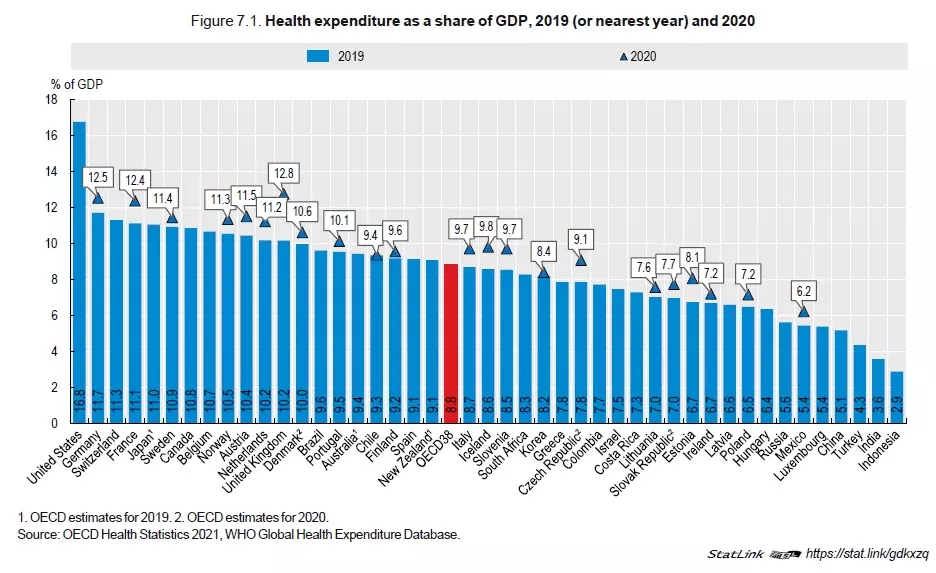
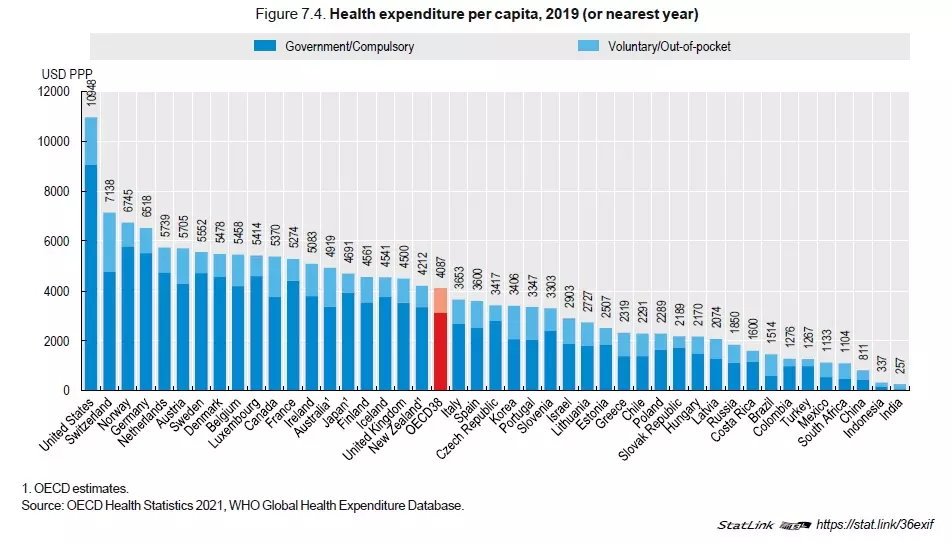
But despite this high level of health care spending, basic measures of US health outcomes are not especially good. There are lots of examples, but here are a few. The first graph shows that US life expectancy is not especially good by international standards: indeed, the growth in US life expectancy since 1970 isn’t all that good, either. The second graph show US rankings on infant mortality: just beating out China, but not quite as good as Russia. The third graph looks at mortality from what the OECD classifies as “preventable” conditions and “treatable” conditions. For example, lung cancer is classified as “preventable” through reductions in smoking, while breast and colorectal cancers are classified as “treatable.” By either measure, US mortality rates are disturbingly high.
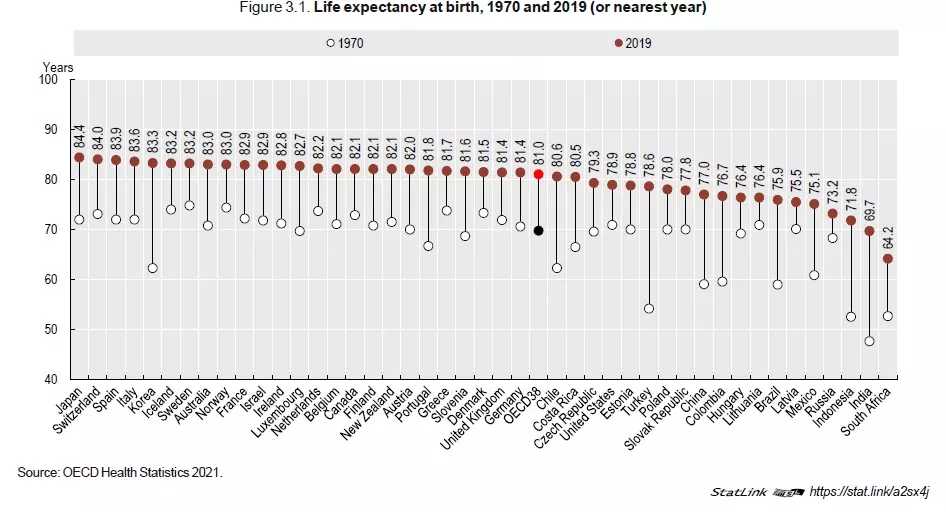
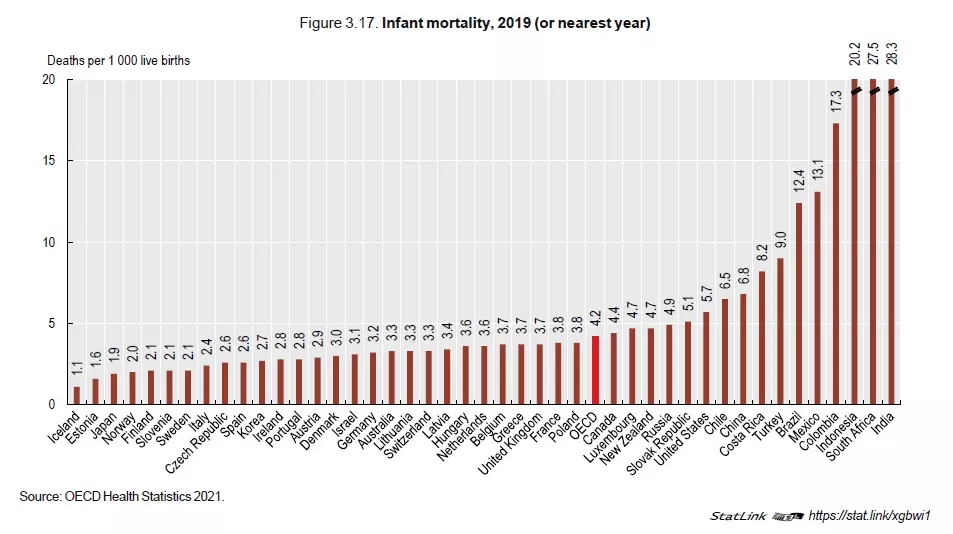
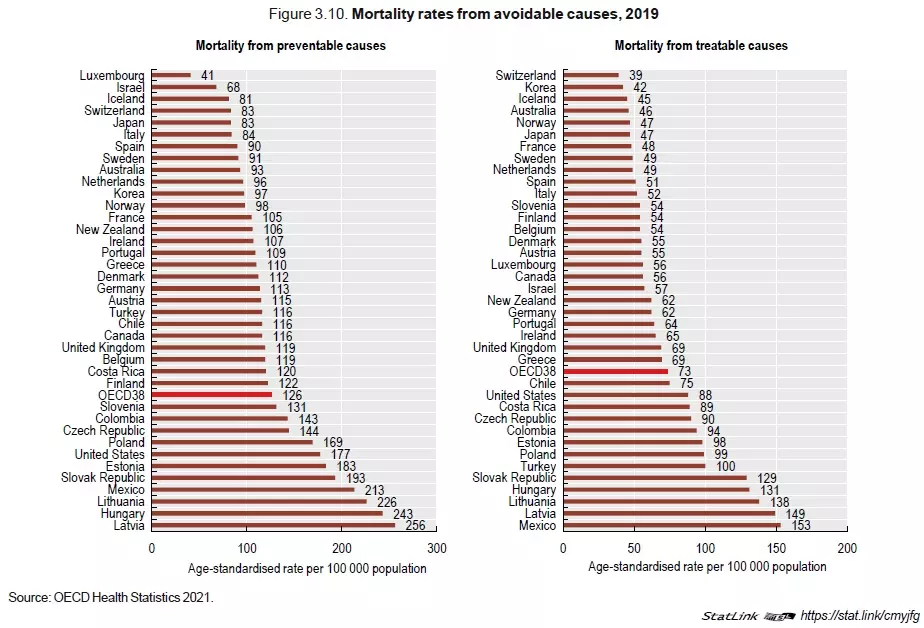
Given these high costs and sub-average outcomes, what do Americans have to be pleased about in their health care system? A few examples caught my eye. One is how people rate their own health. It turns out that by international standards, a low proportion of Americans rate their health as “bad” or “very bad,” while a high percentage rate it as “good” or “very good.” (Although the second figure also shows that the gap between how Americans in the top income group and bottom income group rate their own health is substantial.)
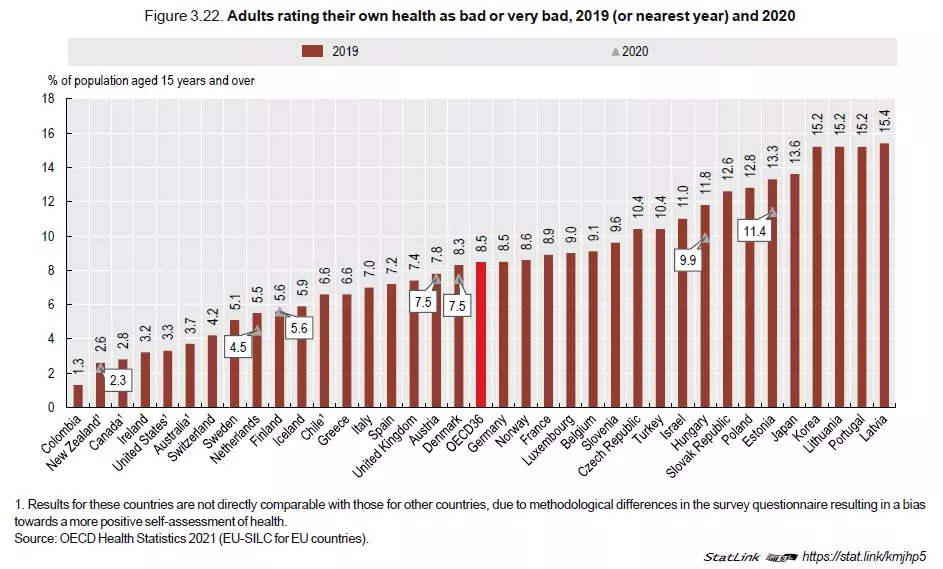
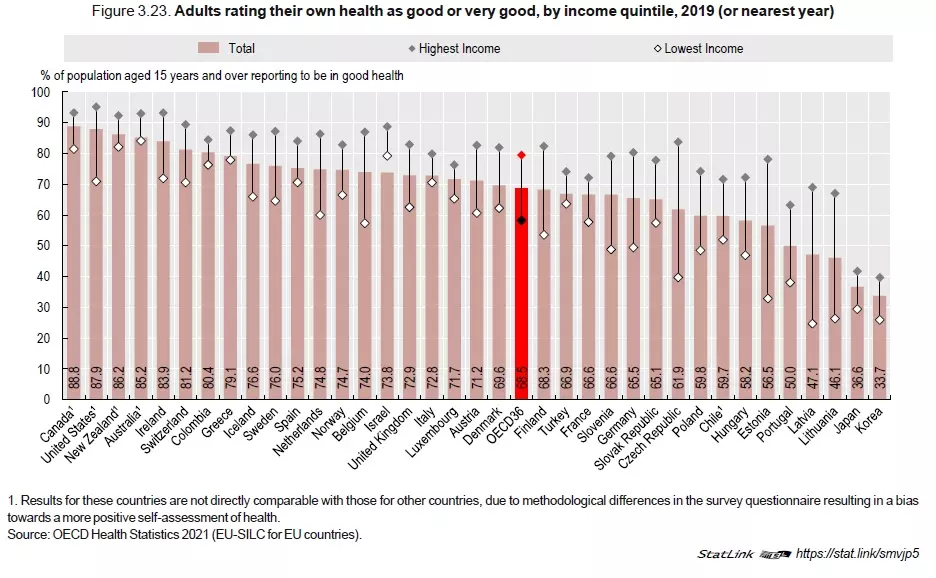
Americans tend to feel satisfied with the quality of health care available in their area–at least more so than people in Sweden, the United Kingdom, or Japan.
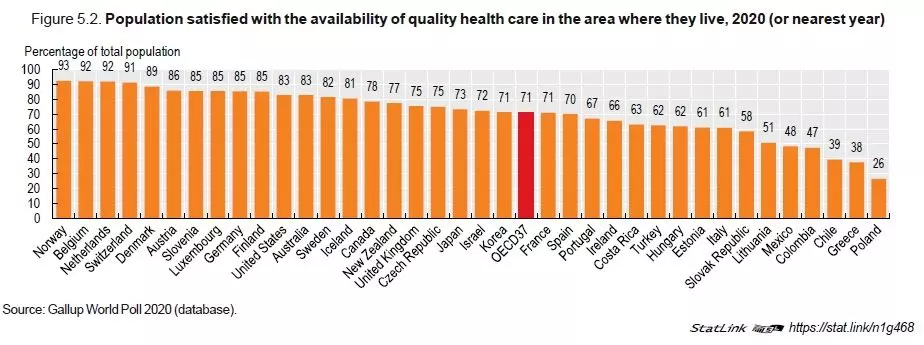
It also turns out that when it comes to out-of-pocket health care costs, the US does reasonably well in these international comparisons: for example, the share of household consumption going to out-of-pocket health care spending in the US is the same as in Canada, only a bit higher than in the United Kingdom, and lower than in Sweden, Denmark, or Norway.
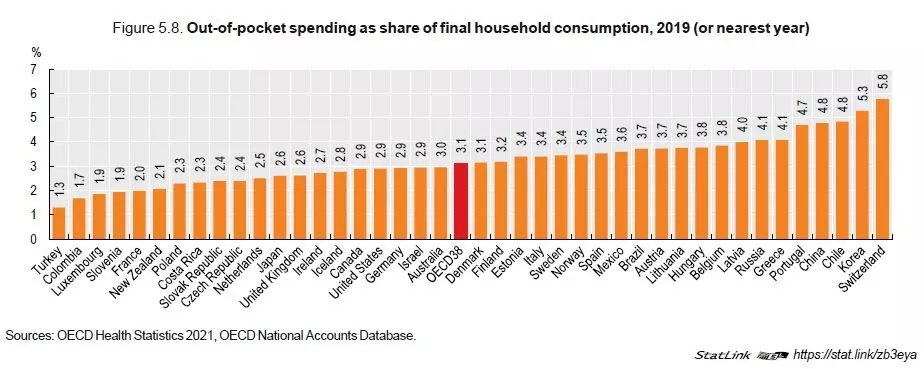
This final group of comparisons showing some ways in which Americans like their health and their health care system are not intended to suggest that the US health care system broadly understood (that is, understood to include public health efforts that happen outside the health care system itself) doesn’t need some meaningful reforms to reduce costs and to improve access and health outcomes. But it does perhaps help to explain why meaningful reform has been hard to achieve.
Timothy Taylor is an American economist. He is managing editor of the Journal of Economic Perspectives, a quarterly academic journal produced at Macalester College and published by the American Economic Association. Taylor received his Bachelor of Arts degree from Haverford College and a master's degree in economics from Stanford University. At Stanford, he was winner of the award for excellent teaching in a large class (more than 30 students) given by the Associated Students of Stanford University. At Minnesota, he was named a Distinguished Lecturer by the Department of Economics and voted Teacher of the Year by the master's degree students at the Hubert H. Humphrey Institute of Public Affairs. Taylor has been a guest speaker for groups of teachers of high school economics, visiting diplomats from eastern Europe, talk-radio shows, and community groups. From 1989 to 1997, Professor Taylor wrote an economics opinion column for the San Jose Mercury-News. He has published multiple lectures on economics through The Teaching Company. With Rudolph Penner and Isabel Sawhill, he is co-author of Updating America's Social Contract (2000), whose first chapter provided an early radical centrist perspective, "An Agenda for the Radical Middle". Taylor is also the author of The Instant Economist: Everything You Need to Know About How the Economy Works, published by the Penguin Group in 2012. The fourth edition of Taylor's Principles of Economics textbook was published by Textbook Media in 2017.
Leave your comments
Post comment as a guest